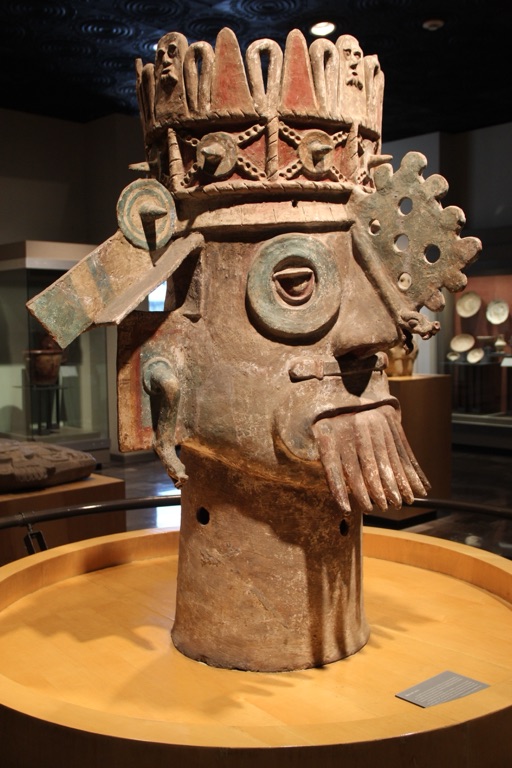Tlaloc, one of the most venerable deities in the Aztec pantheon, presided over the elemental domain of rain, fertility, and water. Esteemed as a life-giver and a harbinger of both prosperity and destruction, Tlaloc’s influence permeated the agricultural and daily lives of the Aztec people.
The Aztec Empire
Aztec Empire Historical Sites and Ruins
Aztec Mythology
| Huitzilopochtli – Aztec God |
| Quetzalcoatl – Aztec God |
| Tezcatlipoca – Aztec God |
| Tlaloc – The Aztec Rain God |
Aztec Artifacts
| Monolith of Tlaloc |
Aztec Historical Figures
| Montezuma II |
| Cuauhtémoc |
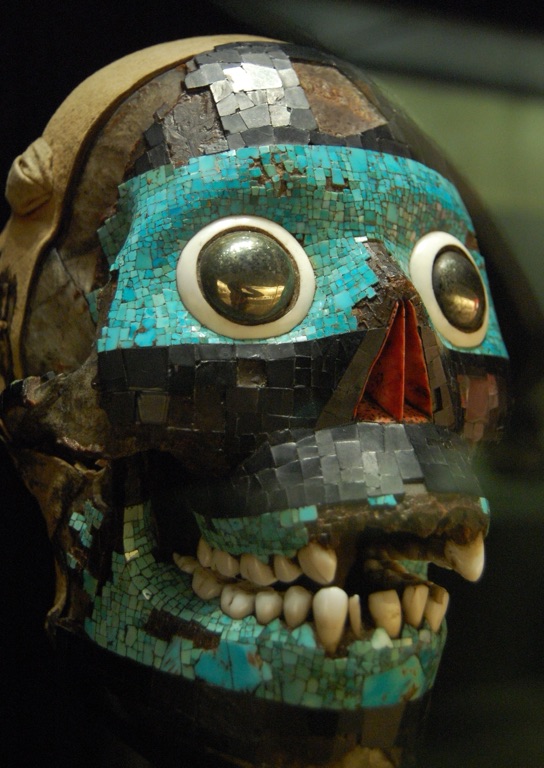
Tezcatlipoca – Aztec God
Tezcatlipoca, whose name translates to “Smoking Mirror” in Nahuatl, stands as one of the most complex and significant deities in the Aztec pantheon. Originating from pre-Columbian mythology, Tezcatlipoca is associated with a wide array of concepts including the night sky, the earth, rulership, divination, temptation, and warfare. His significance in Aztec religion is profound, embodying the omnipresent and omnipotent nature of a god who could influence the fate of humanity and the cosmos.
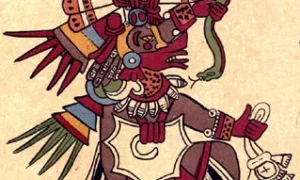
Quetzalcoatl – Aztec God
Quetzalcoatl, whose name translates to “Feathered Serpent” in Nahuatl, stands as one of the most significant deities in Mesoamerican cultures, particularly among the Aztecs and Toltecs. This deity embodies a complex blend of earthly and divine attributes, symbolizing the union of the heavens and the earth. Quetzalcoatl is not only a god of wind and air but also a creator deity who played a pivotal role in the creation and sustenance of mankind. His mythological narratives are rich and varied, reflecting his importance across different cultures in pre-Columbian Mesoamerica.
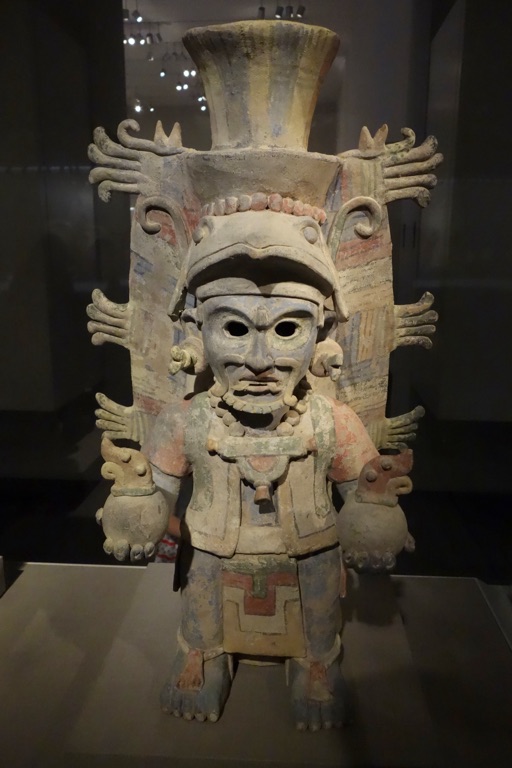
Huitzilopochtli – Aztec God
Huitzilopochtli, a central deity in Aztec mythology, stands as a god of the sun and war. His name, often translated as “Hummingbird of the South” or “Hummingbird on the Left,” reflects his significant attributes and the Aztec’s deep reverence for him. As a patron god of the Mexica (Aztec people), Huitzilopochtli’s influence permeated various aspects of Aztec culture, from warfare to religious practices.
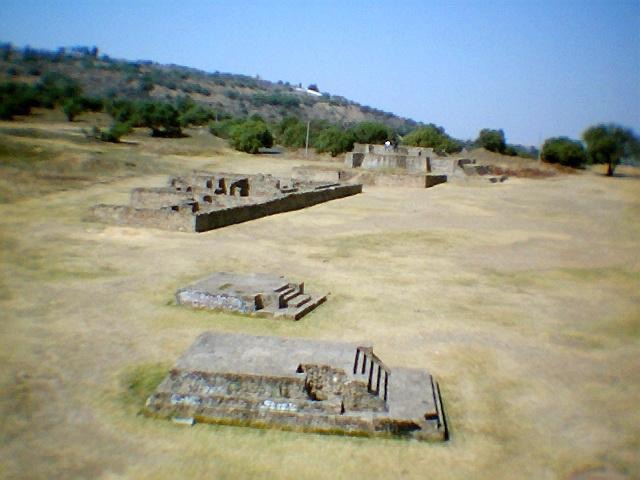
Acozac Ixtapaluca
The site of Acozac has been historically linked with Tlazallan-Tlallanoztoc, as documented in the Codex Xolotl, suggesting its importance as a city site during the reign of the grandson of Xólotl, Techotlallatzin. Ceramic evidence from the site indicates that its foundation likely commenced during the Azteca I phase, spanning from 900 to 1200 AD. The occupation of Acozac continued into the Aztec phase II, from 1200 to 1430 AD, coinciding with the reign of Techotlallatzin. The structures that are currently visible at the site date back to the Azteca phase III, from 1430 to 1521 AD.
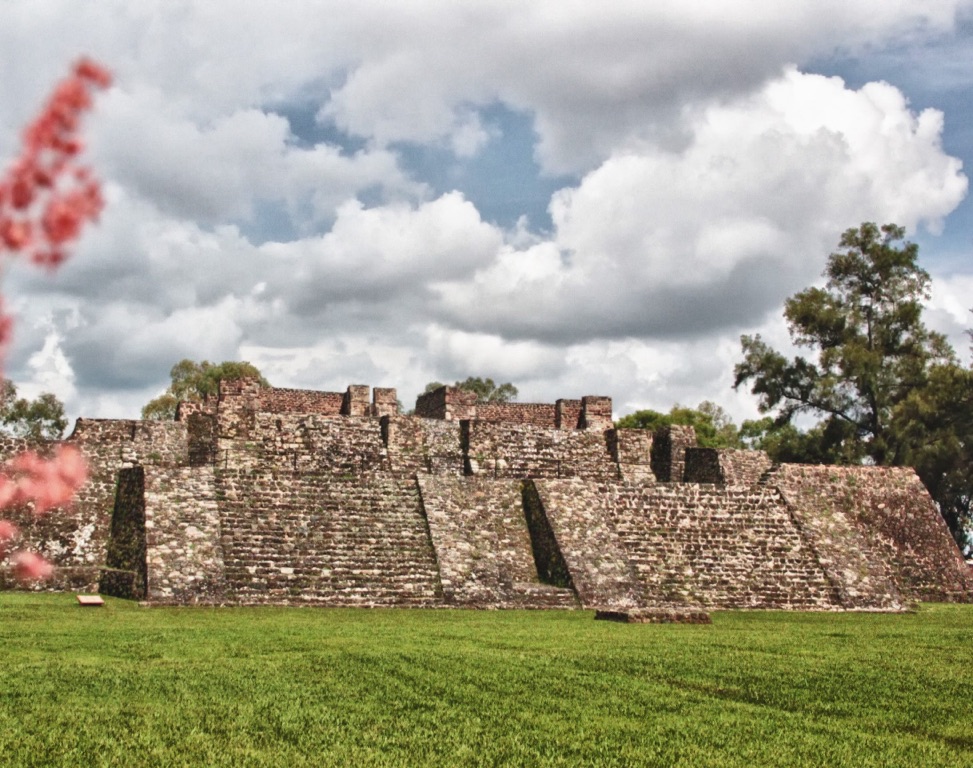
Teopanzolco
The magnificent Teopanzolco stands as a testament to the rich cultural tapestry of Mexico’s past. Nestled in the heart of Cuernavaca, Morelos, this historical site is a vital piece of the Mesoamerican puzzle. It reveals the complex layers of pre-Columbian societies. The site comprises of several pyramidal structures. These are tangible remnants of the Aztec civilization’s architectural prowess and their predecessors. Teopanzolco is more than just a series of ancient ruins. It’s a living memory of bygone eras where ritual and tradition played central roles in society. It provides a window into the lives and beliefs of its ancient inhabitants.

